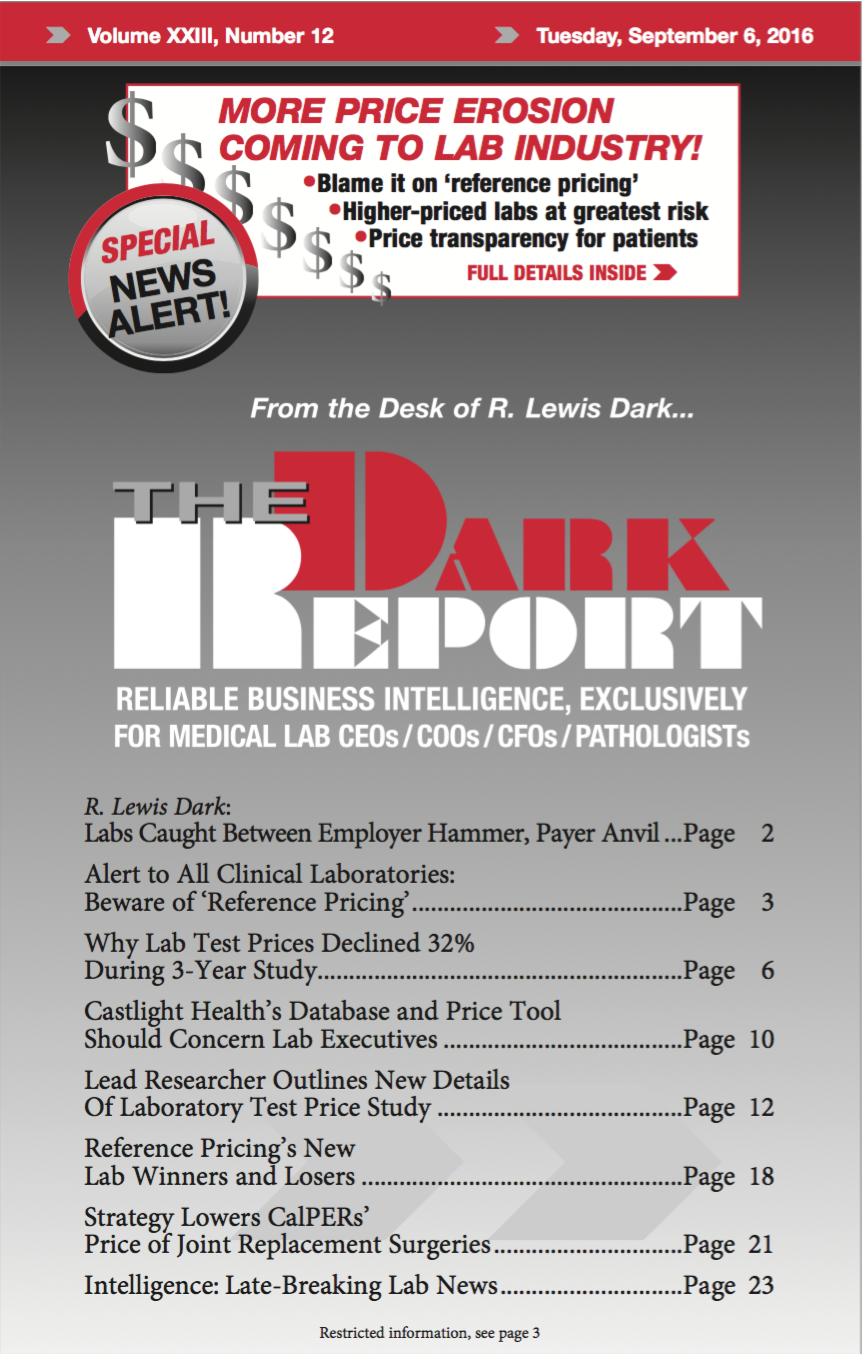This is an excerpt from a 1,600-word article in the September 6 issue of THE DARK REPORT. The complete article is available to paid members of the Dark Intelligence Group. CEO SUMMARY: It’s the newest threat to clinical lab survival. A new study shows exactly how reference pricing in healthcare is likely to work, as …
The newest threat to lab revenues: reference pricing in healthcare Read More »
To access this post, you must purchase The Dark Report.


